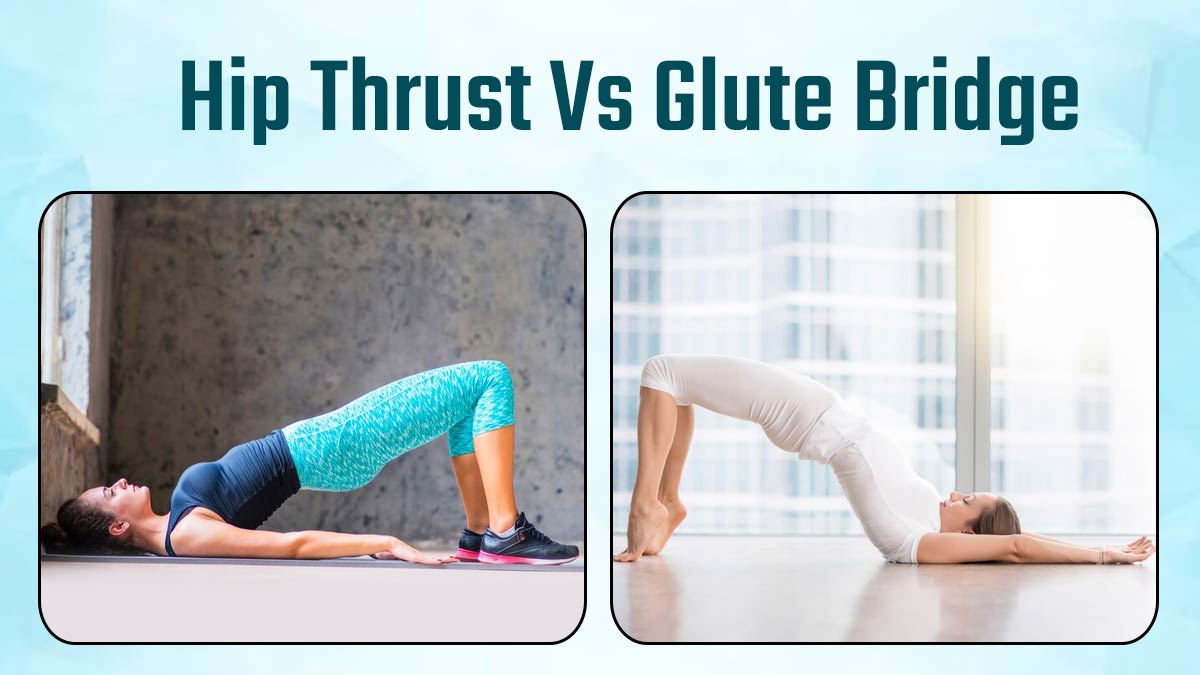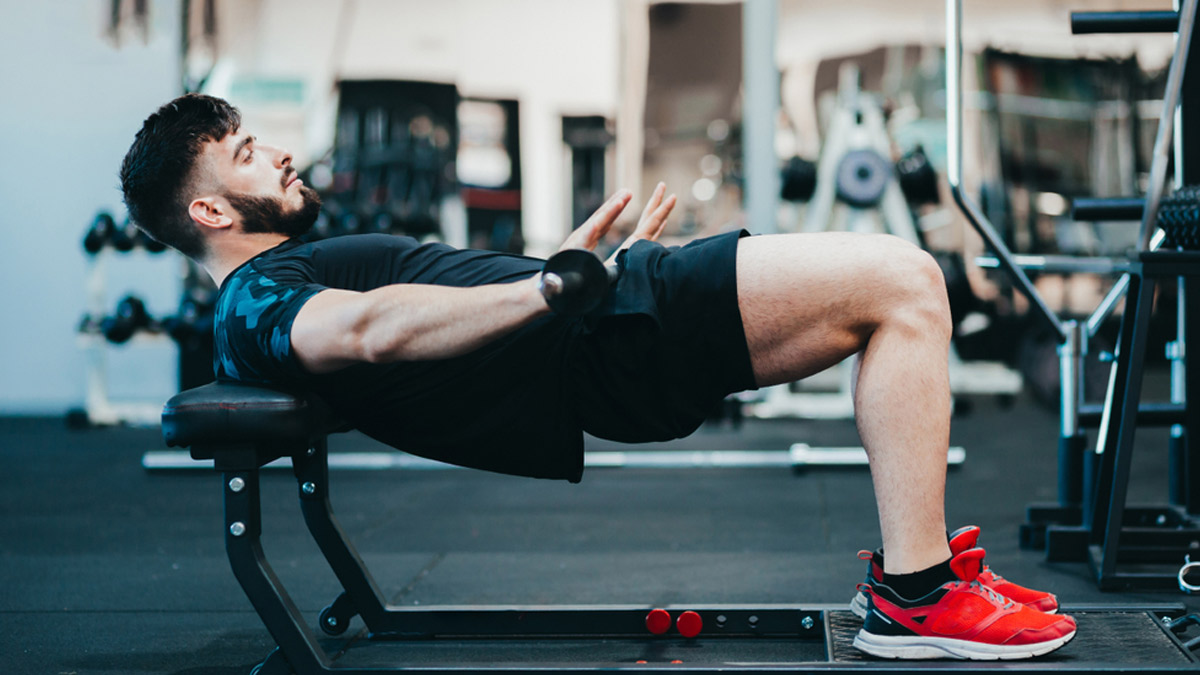
Are you looking for exercises that target your gluteal muscles and enhance lower body strength and performance? Look no further than hip thrusts and glute bridges. These two popular exercises are known for their effectiveness in targeting the gluteal muscles, but they differ in technique and benefits. We spoke to our expert Ishaan Arora, Karnal-based Body Building India Certified Fitness Trainer, who explained distinctions between these exercises can help you choose the right one for your fitness goals and preferences.
Table of Content:-
Hip Thrusts: Building Strength and Power

“Hip thrusts are a compound exercise that primarily targets the gluteus maximus, the largest muscle in the buttocks. To perform a hip thrust, you'll need a bench or elevated surface and a weighted barbell or resistance band”, said Arora.
Technique
- Begin by sitting on the ground with your upper back resting against the edge of the bench
- Place a padded barbell across your hips and feet planted firmly on the ground, hip-width apart
- Engage your core, squeeze your glutes, and drive your hips upward until your body forms a straight line from shoulders to knees
- Lower your hips back down with control, and repeat for the desired number of repetitions
Benefits
Arora listed the benefits of hip thrusts as follows:
- Enhances strength and power in the glutes, hamstrings, and lower back.
- Improves hip extension, which is crucial for athletic performance and functional movements like running, jumping, and squatting
- Can be easily loaded with heavy weights to promote muscle growth and strength gains
- Provides a greater range of motion compared to glute bridges, allowing for increased muscle activation
Also Read: Circuit Training for Fitness: Expert Lists Its Benefits And Purpose
Glute Bridges: Activating and Strengthening

“Glute bridges are a foundational exercise that targets the glutes and hamstrings while also engaging the core muscles. This exercise can be performed with bodyweight alone or with added resistance, such as dumbbells or resistance bands”, added Arora.
Technique
- Lie on your back with your knees bent and your feet resting flat on the ground, spaced hip-width apart
- Keep your arms by your sides to maintain stability
- Push through your heels and lift your hips toward the ceiling until your body forms a straight line from shoulders to knees
- Contract your glutes at the peak of the movement, then lower your hips back to the initial position
Benefits
Arora listed the benefits of glutes as follows:
- Activates the glute muscles effectively, helping to improve muscle tone and definition.
- Enhances hip mobility and flexibility, which can reduce the risk of injury and improve overall movement mechanics
- Can be performed anywhere with minimal equipment, making it a convenient exercise for home workouts or gym sessions
- Suitable for beginners or individuals recovering from injury, as it's low-impact and easy to modify based on fitness level
Also Read: Chitharesh Natesan: From 'The Indian Monster' To Mr Universe 2019 - A Tale of Fitness Inspiration
Choosing the Right Exercise
“When deciding between hip thrusts and glute bridges, consider your fitness goals, preferences, and current fitness level. Both exercises are valuable additions to any lower body workout routine and can be incorporated into various training programs”, highlighted Arora.
He listed the following tips for consideration:
- For Strength and Power: If your primary goal is to build strength and power in your glutes and lower body, hip thrusts may be the better option. Focus on progressively increasing the weight and intensity of your hip thrusts to challenge your muscles and promote growth.
- For Activation and Mobility: If you're looking to activate and strengthen your glutes while improving hip mobility and flexibility, glute bridges are an excellent choice. Focus on performing the movement with proper form and control, and consider incorporating variations, such as single-leg glute bridges or elevated glute bridges for added challenge.
[Disclaimer: This article contains information provided by an expert and is for informational purposes only. Hence, we advise you to consult your expert before trying any new exercise regimen, especially if you are dealing with any injury.]
Also watch this video
How we keep this article up to date:
We work with experts and keep a close eye on the latest in health and wellness. Whenever there is a new research or helpful information, we update our articles with accurate and useful advice.
Current Version